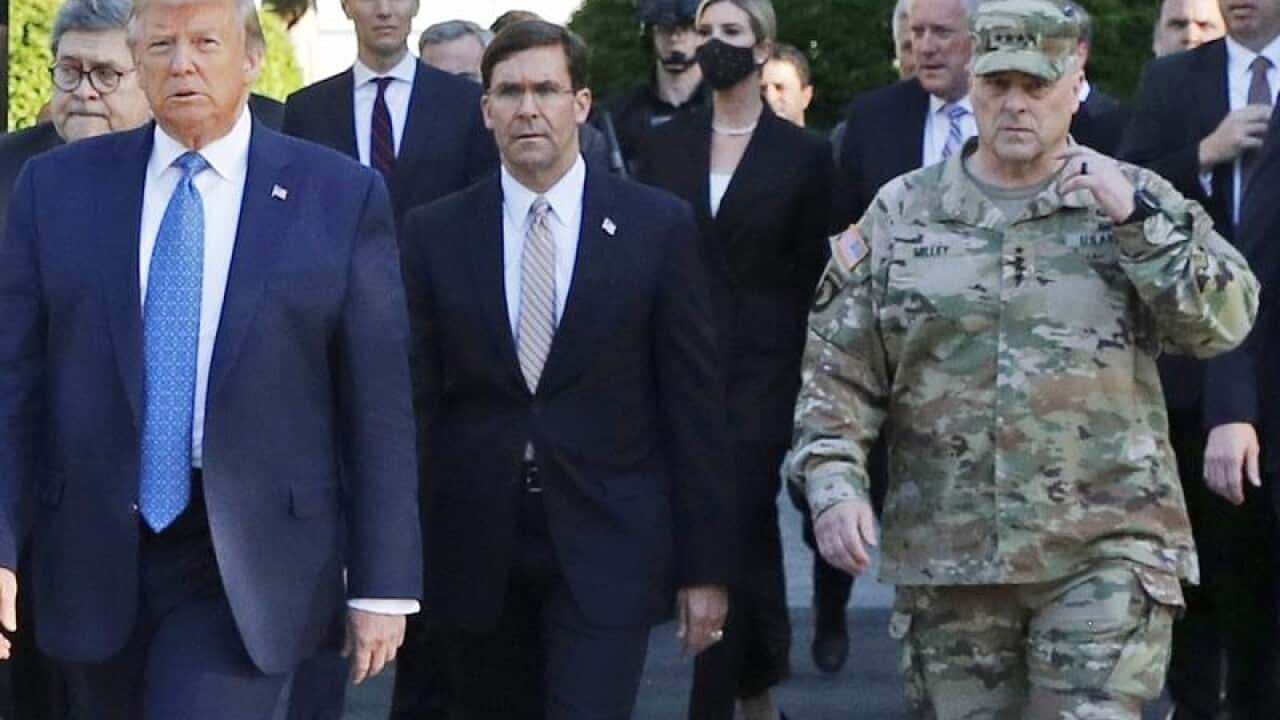The top US military officer says he should not have joined President Donald Trump as he walked from the White House to a nearby church for a photo opportunity after authorities cleared the way of protesters using tear gas and rubber bullets.
"I should not have been there," Joint Chiefs of Staff Chairman General Mark Milley said of his appearance at the politically charged event on June 1.
"My presence in that moment and in that environment created a perception of the military involved in domestic politics," he said in a prerecorded video commencement address to the National Defense University.
Milley's remarks followed a rare outpouring of condemnation from retired US generals and even former defence secretary Jim Mattis for taking part in the event, given that the US military is meant to be apolitical and is sworn to defend the US constitution, which protects the right to peaceful protest.
Milley and Defense Secretary Mark Esper had joined Trump to pay a surprise visit to Saint John's Church, during which the president held up a Bible for photographers.
Minutes before the visit, law enforcement used tear gas and rubber bullets to disperse mostly peaceful protesters occupying the square between the White House and the church in a demonstration against the police killing of George Floyd, drawing condemnation from Democrats and some Republicans.
The National Guard supported law enforcement at the site.
"As a commissioned uniformed officer, it was a mistake that I have learned from, and I sincerely hope we all can learn from it," Milley said. He stopped short of apologising outright.
Esper on Thursday ordered a review of the National Guard's response to the unrest, the Pentagon said. Army Secretary Ryan McCarthy would conduct the review, it said.
As authorities were clearing the square, Trump delivered a speech at the White House condemning "acts of domestic terror" and saying the United States was in the grips of professional anarchists, violent mobs, arsonists, looters, criminals and others.
He promised the mobilisation of thousands of US troops and told state governors that same day he was putting Milley "in charge" of the protest response. Milley later seemed to reinforce Trump's comments by appearing in downtown Washington that evening in camouflage fatigues.
The protests following Floyd's killing in Minneapolis have been largely peaceful. Floyd, who was black, died after a white police officer knelt on his neck for almost nine minutes on May 25.

